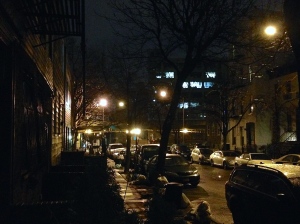
Classical Symphony – Sergei Prokofiev
I should be on my way to Russia right now. Quick stopover in Moscow then on to Ekaterinberg, the furthest east of all the World Cup 2018 venues. That was the plan. Targeting the game there on Friday – Egypt v Uruguay. After the season that Mo Salah has had I’d like to see him at a World Cup. Will he be fit ? Hmmm
However here I am at home in Brooklyn having spent the afternoon on a reconnaissance trip to Brighton Beach. Little Odessa, not Hove, actually. Looking for World Cup vibes because we’re spending this World Cup in New York City. We’ll be seeking out neighbourhood cafes and restaurants showing games, in particular representing the teams which are playing. So, on Friday we’ll be heading to Bijans, an Iranian restaurant in Boerum Hill, just down the road, for the must-win game for both Morocco and Iran since the other two teams in that group are mighty Portugal and Spain.

Jenny and I in Soweto, World Cup 2010
But why aren’t we going to Russia then? Jenny and I have been to the last six World Cups – in Los Angeles ’94, France ’98, Japan/Korea ’02, Germany ’06, South Africa ’10 and Brazil ’14. Amazing times. Truly. But Jenny decided about a year ago that she didn’t fancy the Russia World Cup because of the continued racism at games in that country. We met some Russians in Rio in 2014 on their way to the Maracaña to see Russia play Belgium. I asked them where they were from and they, all fresh-faced and covered in flags, said “Irkutsk”. Wow, I thought, remembering the Risk board from my teens, Siberia !! They’ve come a long way. And they seemed so sweet and naive and I remember thinking – the World Cup in Russia will be cool. I still hold to that. But Jenny has been in England for 4 months doing a play at the Donmar and only just got back, I don’t really want to fly off to Russia on my own, leaving Jenny behind, in the hope of hooking up with our old football buddy Billy The Bee who has a slightly more England-centred agenda than me. I did want to, but I didn’t. I wouldn’t. I haven’t.

Me, Melissa (her 1st game!!) & Bella Bee at Griffin Park after 2-1 win v QPR
When I travelled to London in April to see Jenny in the play ‘The Way of The World‘ by William Congreve, I decided to see Billy to break the news to him that I wouldn’t be accompanying him to Russia. I went west on the Piccadilly Line from Covent Garden to Northfields and walked down to The Globe, where I have been many times before for Brighton & Hove Albion away matches v Brentford, for Billy the Bee is, yes you guessed it, a Brentford fan, and today they were at home to West London Rivals Queens Park Rangers. (Brentford won 2-1). As the afternoon and beers progressed, a number of Billy’s mates, including dear David Lane who I know, came up to Billy and expressed worry on his behalf in Russia. None of them were going. I added my forthcoming absence to his day.

Billy the Bee in Johannesburg, World Cup 2010
Jenny and I met Billy on a train from Paris to Toulouse during France ’98. We watched the England v Romania game together on a pavement TV after failing to score tickets for the match, and found each other at every World Cup since then. We were in Jo’burg together in a large house, went to Soweto pretty much every day. You can find these stories on my other blog. Rather weirdly they read from the bottom up. Gonna see if I can fix that.
Anyway.
Russia. I wish I was going. But I’m not. The country, the nation, its politics and culture has had a huge part in my life since I was small. Always held up as the reason why people weren’t communist, or the reason why they were. The 20 million war dead who stopped Hitler alongside the British and the Americans always turn up in arguments, rightly so. I read Marx at school (he was German I know but his writing had a profound effect on Russia) and wondered why his teachings, which resembled those of Jesus in the New Testament, were so reviled in my own country. I pieced it together fairly quickly, indeed to the extent that I chose to go to University at the LSE rather than Cambridge, and studied Lenin and the revolution. There in the late 70s I did a course entitled “Soviet & Yugoslav Legal Systems” which made up 25% of my 3rd year, and was taught by Law Professor Ivo Lapenna who was a Slav. Four or five times a class he would utter the famous formulation “according to Marxism…” and this almost made the three years of law worthwhile, indeed privileged was I to spend part of my youth sitting in educational establishments learning these things. Ten years later in 1989 I read Mikhail Gorbachev‘s book Perestroika and was there in Berlin when the wall came down at the end of that momentous year (see My Pop Life #166). There was a shrinkage of the Soviet state down to its essence, Russia, and the gangsters took over.

And of course I’ve had to parse the media throughout my life regarding stories and attitudes to The USSR as it was known until I turned 33. United Soviet Socialist Republic. Stories are inevitably negative until you read The Morning Star, or go to the source material, the history, the books that Marx or Gorbachev or Solzhenitsyn actually wrote. They’re very good by the way. The current Western bad guy is once again the Russian Bear, personified, as these short-hand attitudes always have to be, by a figure, in this case, Mr Vladimir Putin. Randy Newman had a song called Putin on his last album which contained the opening line
Putin puttin’ his pants on
which is both hilarious and childish. But now we’re supposed to be interested in these cartoon personalities and their egos. Forgive me if I don’t get into politics, right now.


And in parallel to these political revolutions and counter-revolutionary upheavals, I was reading Dostoyevsky and Solzhenitsyn as a teenager. Crime & Punishment, The Idiot, One Day In The Life Of Ivan Denisovitch, and Cancer Ward. I actually wrote a short story whilst at school entitled One Day In The Life of Ivan ‘eadache Mum, which was a kind of parody of me being late for school as I recall.


I read Turgenev and the amazing Nikolai Gogol as a student, surrealist and hilarious material in the case of the latter, and my first Leo Tolstoy novel Boyhood.

I finally read Tolstoy and Pushkin as an adult. Of these, Tolstoy’s War and Peace is my favourite, I relished it, every word. I will read it again if I live long enough. Fyodor Dostoyevsky writes so well about people and I’ve always felt that The Brothers Karamazov perfectly described my two brothers and I. But I was a teenager when I felt that and it may not stand up to detailed scrutiny to be fair. The Idiot is quite superb. The Peter Sellers film Being There is based on it. I’m saving Anna Karenina for a rainy day, but remember clearly my first girlfriend reading it when she was 16. I never got on with The Master & Margerita I must confess, but I’m prepared to have another go, neither have I got around to Nabakov yet. Plenty of time for that I hope, and I have been told how great he is.

I haven’t seen the Bolshoi Ballet, but I have seen a Russian ballet company from St Petersburg during the Brighton Festival with my friend Millie (who loves ballet) performing Tchaikovsky‘s Nutcracker Suite & Swan Lake. It was a classic performance which for me meant it was a bit of a museum piece but it was breathtakingly beautiful.
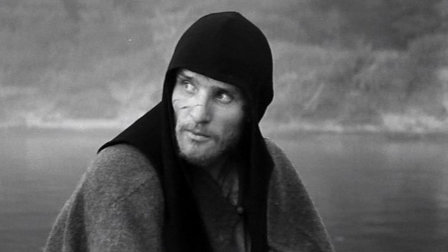
One of my top five films is Russian – I refer to Andrei Tarkovsky‘s Andrei Rublev, made in black & white in 1965. It is a three-hour meditation on the life of the medieval icon painter Rublev, but that doesn’t even begin to touch at the remarkable achievement of this film. Seek it out and enjoy if you haven’t seen it. I know it doesn’t sound like a film that you want to see, and there’s nothing much I can say to change that, except that it is absolutely breathtakingly brilliant. All of Tarkovsky’s films are extraordinary in different ways – I name-checked his sci-fi masterpiece Solaris in My Pop Life #121. The final film, made in Sweden is called The Sacrifice and again it is quite an astonishing piece of work.
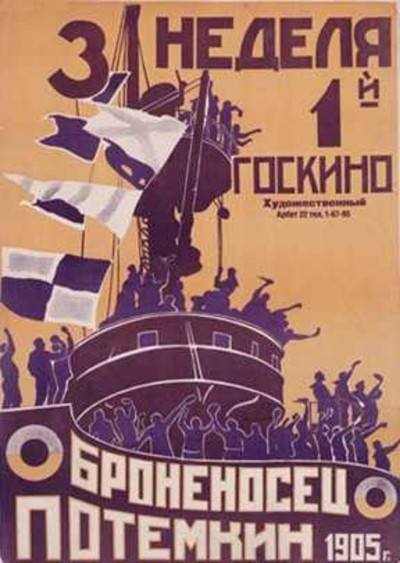
Original poster for Battleship Potemkin, 1925
Other Russian films I have marvelled at include Elem Klimov‘s ‘Come and See‘ about the effect of war on a young man, some of the images from that screening sometime in the early 1980s are seared onto my brain. And of course Sergei Eisenstein‘s Battleship Potemkin and Alexander Nevsky are both essential viewing for film buffs as is Bondarchuk‘s War & Peace. And just last year I was sent a BAFTA dvd for the film Loveless, directed by Andrey Zvyagintsev which was quite superb.
I have managed to avoid Dr Zhivago both in print and on screen.

Anton Chekhov
Anton Chekhov of course was a genius, if there is such a thing, and his plays have thrilled me. From The Seagull which I saw with with John Hurt to Three Sisters, The Cherry Orchard and Uncle Vanya -they are all exceptional, exquisite. My friend Simon Korner was pleading with me to read Chekhov’s short stories when we were both 18, and I finally read them in my 40s. They are indeed quite the finest short stories I think I have ever read, although James Baldwin still takes some beating.

‘Day of the Artist’ by Marc Chagall
Marc Chagall is Russian isn’t he ? Belorussian. I love his work. He did some large-scale stuff including ‘The Triumph Of Music’ in the entrance hall of the Metropolitan Museum in NYC in 1964. And the propagandists of the revolution created some incredible stuff. And Kandinsky.
I’ll only get into trouble if I start rabbiting on about Constantin Stanislavski and the method school of acting. I read his book as a young man – of course I did, having not trained as an actor it was the least I could do. I’ve never really got past the “if you’re acting it you have to experience it” thing though, having played a number of killers myself over the years and never actually killed someone to see what it feels like.

Sergei Prokofiev
And so to the music. I should have listened to Peter & The Wolf as a child but I have no memory of it. Sergei Prokofiev wrote it in 1936 when he was 45 years old, and had finally settled in Moscow after leaving Russia in 1918, although he was never an exile from the Revolution as I understand it. I suspect Tchaikovsky was the first Russian music I listened to – Swan Lake no doubt which I even suspect we may have owned on 78 rpm and played on our portable wind-up gramophone (see My Pop Life #43). Once you’ve heard of someone, you keep hearing it of course. Everyone’s a Fruit & Nut Case was a commercial on British TV (Cadbury’s chocolate) to the tune of Sugar Plum Fairies. Then it was probably the 1812 Overture with its cannon gimmick, then he gets a mention in Harold Pinter’s The Caretaker which I did for A-level English Literature, then the Ken Russell film The Music Lovers. Of course I must mention Mussorgsky because in 1971 I bought the Emerson Lake & Palmer LP Pictures at an Exhibition which introduced me to public humiliation being a prog-rock canter through his song suite of the same name and deeply uncool. Its still brilliant, and it was when I was 14.
Sergei Rachmaninov crept in at some point in my 20s – particularly the 2nd Piano Concerto which Eric Carmen borrowed for the pop song “All By Myself“. Later I would buy an album called Rachmaninov Plays Rachmaninov which I recommend very highly indeed. He had very large hands and could play a natural 12th on the piano with ease. Anyway, I never really considered Prokofiev or Rachmaninov or Tchaikovsky to be Russian. They were “Classical” composers who became international and of no nation almost because of the music. I’m still learning though, because classical music went through a very nationalistic phase 100 years ago when each nation’s composers started to celebrate their own folk music and turn it into high art, and the Russians participated in this too. Did Borodin try it ? Not sure.

Scheherezade – painting by Léon Bakst
My current swoon is Rimsky-Korsakov‘s Sheherezade which is a suite based on the Arabian Nights and is stunning. I listen to it once a week, it is quite tremendous. I didn’t start checking out Dimitri Shostakovitch or Igor Stravinksy until later – but in-between these musical giants I fell in love with the genius of Sergei Prokofiev.

I think I bought the Classical Symphony when we were living in Los Angeles in 1992-5. Tower Records on Sunset Boulevard was a giant Emporium of music – I remember bumping into Meera Syal & her then husband Shekhar Bhatia in there one afternoon, a basketful of CDs in the crook of my arm. I think they were on holiday, but perhaps Meera was auditioning for things. Bless her. Perhaps Prokofiev was in there. It is his 1st symphony, written in Russia in the summer of 1917, weeks before the October Revolution. He called it the Classical Symphony himself, because he felt that one of his heroes Franz Josef Haydn (see My Pop Life #134) would have written in that style were he alive. Indeed, all of Haydn’s 106 symphonies are very short and the form then got heavily stretched by Mozart, Beethoven and later Mahler so that you might be sitting for 95 minutes watching and listening to Mahler’s 3rd Symphony. In contrast, Prokofiev’s Classical Symphony is very short – in my version by Leonard Bernstein & the NY Philharmonic it comes in at under 14 glorious minutes. It is a sprightly, melodic, wonderfully-arranged piece with massive dynamics which still thrill me today when I listen to it. It has both old-fashioned and very modern elements which the ear picks up on immediately. It does its thing & gets out, rather like Haydn did with his 12-minute symphonies in the 1790/1800s and is similarly instantly accessible and hugely enjoyable.
Prokofiev didn’t stick with the short format for his symphonies, indeed his 5th Symphony which appeared on the same CD is 40 minutes long and very different musically, though similarly popular. Other works of his which I like very much include the 3rd Piano Concerto, often paired with Ravel‘s 1st Piano Concerto and one of the finest works of the 20th century to my sweet-toothed ear. His other best-known piece perhaps is the troika from Lieutenant Kije which actually sounds like a three galloping horses pulling a carriage across a white winter landscape. The Brighton Beach Boys played it at our Christmas gigs and I was charged with playing the melody on my alto in a duet with the French horn. Greg Lake including the melody in his miserable Christmas hit I Believe In Father Christmas at the suggestion, apparently of Keith Emerson. It’s the best part of the song.

I also have David Bowie narrating Peter & The Wolf, where each character in the story is played by a different instrument. I’m sure you know it. I have the first 2 Violin Concertos. There is plenty of his work I have yet to hear, and I can’t claim to be any kind of authority on him. I just love this piece of music.
So I’m indebted to the Russians for much of my cultural and political nourishment. Russia is a major slice of me as I hope I’ve illustrated above. I hope they put on a good World Cup and enjoy it, particularly the non-racist fans. I hope those visitors from all over the world have a splendid time there over the next four weeks. I’ll be watching from my sofa and in the various Egyptian, Colombian, German, English, Senegalese, Iranian, Spanish, Nigerian, French, English and Brazilian restaurants of New York City. I think Brazil will lift the trophy, who knows. But deep down, I wish I was there too.
postscript : some days after writing this I landed in Samara for England’s quarter-final game with Sweden (see My Pop Life 211 Three Lions)
Bernstein conducting the New York Philharmonic in 1968










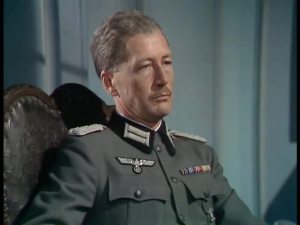
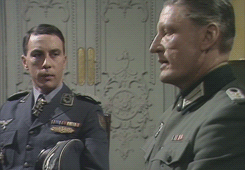
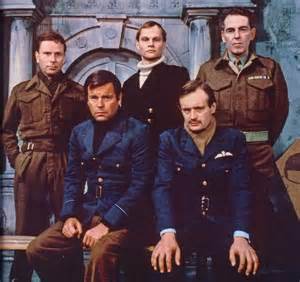
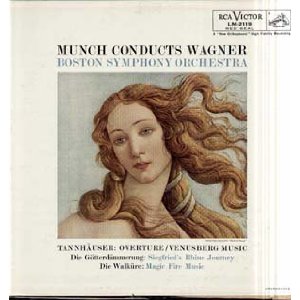
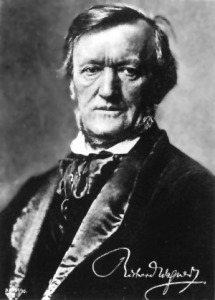

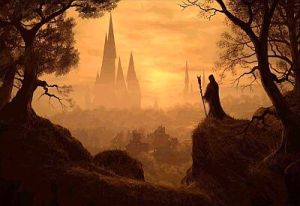







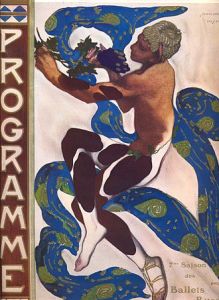 Debussy was a hugely influential composer, particularly on Ravel, Gershwin, Delius, and Stravinsky among the classical composers, and Ellington, Miles Davis, Monk and John Williams among the jazz and film composers. Prélude a l’àprès-midi d’un faune was danced as a ballet in fact in 1924 by the great Nijinsky and caused much furore when he appeared to masturbate as part of the production – despite this being one of the themes of the piece. In the original poem a satyr or puck-like figure follows some nymphs one summer’s afternoon, becoming aroused, but cannot catch them and have his wicked way so instead falls asleep in the afternoon sun. It is a beautiful piece of music and immediately accessible, even with its key changes and tempo adjustments, the flute keeps reappearing and serenading us into bliss. When matched with the starling’s ballet some serendipitous magic appears to be at work – surely they can hear it?
Debussy was a hugely influential composer, particularly on Ravel, Gershwin, Delius, and Stravinsky among the classical composers, and Ellington, Miles Davis, Monk and John Williams among the jazz and film composers. Prélude a l’àprès-midi d’un faune was danced as a ballet in fact in 1924 by the great Nijinsky and caused much furore when he appeared to masturbate as part of the production – despite this being one of the themes of the piece. In the original poem a satyr or puck-like figure follows some nymphs one summer’s afternoon, becoming aroused, but cannot catch them and have his wicked way so instead falls asleep in the afternoon sun. It is a beautiful piece of music and immediately accessible, even with its key changes and tempo adjustments, the flute keeps reappearing and serenading us into bliss. When matched with the starling’s ballet some serendipitous magic appears to be at work – surely they can hear it?






